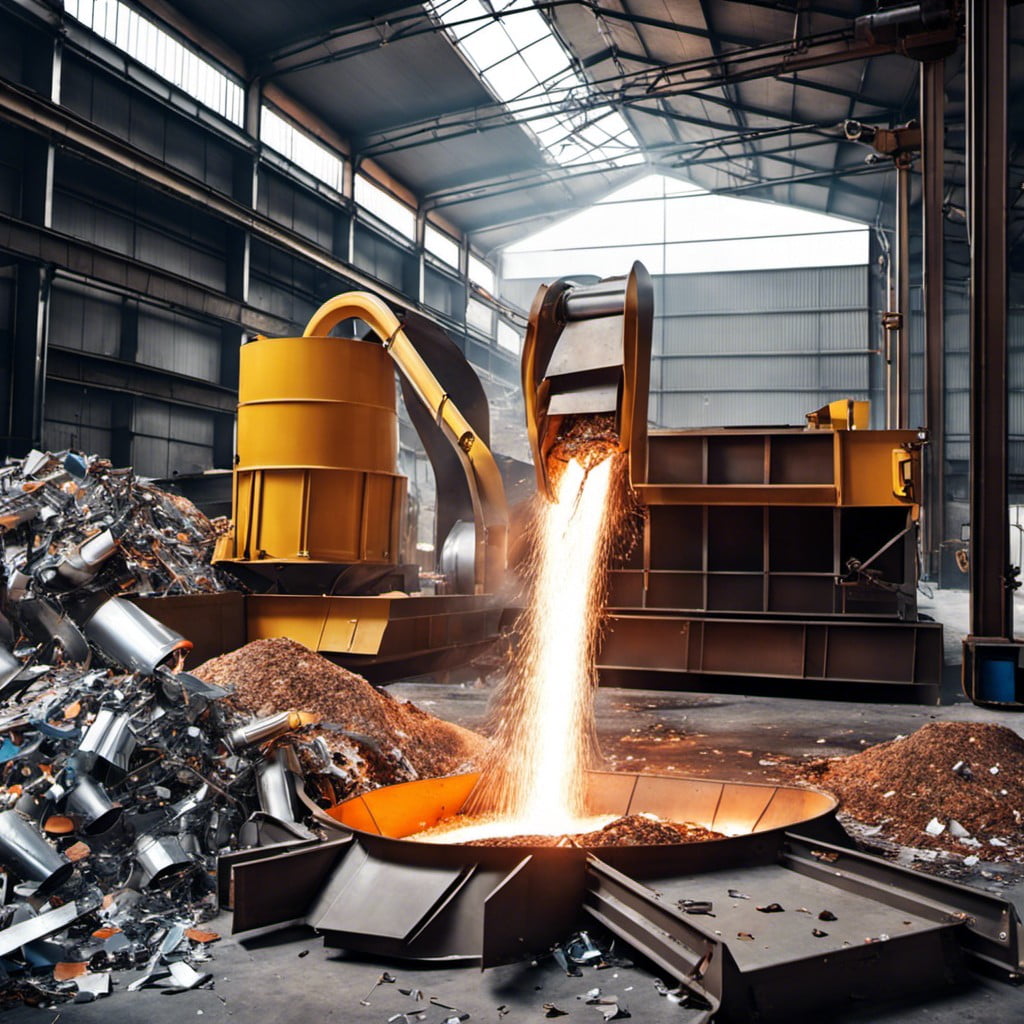Dive into the fascinating world of plastic recycling, as we unravel statistics that highlight its global importance and impact on environmental conservation.
In the realm of plastic manufacturing, recycling plays a pivotal role in mitigating environmental impacts. Delving into the statistics, approximately 8.3 billion metric tons of plastics have been produced since the 1950s, out of which only 9% has been recycled.

This leaves a significant 79% accumulating in landfills or the natural environment. With the average recycling rate of plastic packaging at 42%, there’s a clear call for improvement.
In this article, you’ll find a comprehensive exploration of these statistics, the factors influencing them, and the potential solutions to enhance plastic recycling rates globally. Expect a deep dive into the world of plastic recycling, from data breakdowns to insightful analysis.
Only 5-6% of municipal plastic waste was recycled in 2021
Despite ongoing efforts to increase recycling programs, the recent data shows disheartening progress. In 2021, a small fraction, between 5 and 6%, of total municipal plastic waste received the necessary treatment. The rest was ultimately discarded in landfills or incinerated, contributing to environmental hazards such as methane emissions, groundwater pollution, and combustion related air pollution.
This raises urgent questions about the efficiency of our recycling system and underscores the pressing need for industry innovation, policy changes, and increased public awareness.
There’s 77 Mt total of US plastic waste generation in 2023
Projected data indicates that the United States is set to generate an estimated 77 million metric tons (Mt) of plastic waste in the year 2023. This figure has trended upward over the past few years, mirroring the increasing global dependence on plastics.
This anticipated amount does not only include single-use plastics but also durable goods and packaging materials.
The sharp increase calls for the urgent intervention of more robust plastic management and recycling programs to mitigate environmental risks.
The pressing need for sustainable solutions is clear, as the detrimental environmental impact of such a volume of plastic waste could be far-reaching.
166 Mt of US plastics will be used by 2060 in the US
Current projections estimate a marked increase in plastic production and consumption. By 2060, the total usage is expected to reach an astounding 166 million metric tons.
This projected growth signals an urgent need for more robust and efficient recycling strategies to manage the impending surge of plastic waste.
Without proactive measures, the environmental impact could be severe, highlighting the importance of sustainable practices within the industry.
EPA study shows that recycling accounts for 6801,000 jobs and $37.8 billion in wages in the US
According to data from the Environmental Protection Agency, a significant economic impact is carried by the recycling industry in the United States. Undeniably, it offers considerable employment opportunities, responsible for supporting 681,000 jobs across the nation.
This means that for every 1,000 tons of materials recycled, almost 1.6 jobs are generated. The wages paid yearly amount to a whopping $37.8 billion, which underlines the pivotal role of this sector, not just from an environmental perspective, but from an economic standpoint as well.
The market spends $5.5 billion in tax revenues
Owing to the expansive scale of plastic usage, considerable financial resources have been mobilized to manage them. Tax revenues to the tune of $5.5 billion are directed towards this sector primarily as a means to handle waste, support recycling initiatives, and promote research towards sustainable alternatives.
This significant investment underscores the marked impact of plastic on the economy and the urgent need for effective waste management strategies.
Over 95% of plastic waste goes to landfills or is incinerated for energy
In an alarming revelation, a lion’s share of plastic refuse ends up in landfills rather than recycling plants. This statistic underscores the sheer extent of the problem: waste management systems are overwhelmed by the magnitude of plastic waste, often left with little alternative than discarding it in landfills or incinerating it for energy recovery.
When burnt, plastic releases energy. It’s this energy that waste management facilities recover during incineration, often using it to generate electricity or heat. However, the process is double-edged. Though incineration does provide energy, it also generates significant carbon emissions and contributes to air pollution.
Meanwhile, landfills tend to be the primary destination for plastic waste. Yet, this solution is far from ideal. Plastics can take up to 1000 years or more to decompose, leading to significant soil and groundwater contamination. Additionally, landfilling denies the opportunity to reuse valuable materials, thereby necessitating the production of more plastic.
Clearly, the current predicament necessitates more vigorous efforts towards recycling and creating a circular economy. Otherwise, the continued reliance on landfilling and incineration might significantly exacerbate environmental issues in the near future.
Approximately 36% of all plastic produced is used to create packaging, that’s 85% of plastic packaging in landfills
Delving deeper into the issue, it’s important to note a dominant sector in the overall plastic usage – packaging. With a whopping 36% share of the total plastic production, it is a major contributor to the swelling piles of discarded material.
Unfortunately, a staggering 85% of these packaging materials find their way to the landfills rather than the recycling plants. This constitutes an alarming portion of the total plastic waste, an issue that underscores the immediate need for improved waste management and recycling strategies.
Future sustainability and waste reduction efforts need to significantly target this sector for maximum impact.
About 400 million tons of plastic waste is generated globally every year
Annually, a staggering quantity of plastic waste is created on a worldwide scale. This amount approximately equates to the mass of two-thirds of the world’s population.
A considerable portion of these 400 million tons stem from single-use or disposable plastic items, contributing significantly to environmental pollution and degradation.
These statistics underscore the urgency of enhancing recycling efforts and creating more sustainable, circular plastic economies globally.
About 98% of single-use plastic products are made from fossil fuels
Fossil fuels, primarily petroleum and natural gas, are the primary raw materials in single-use plastic production, comprising nearly 98% of the total composition.
This manufacturing process contributes substantially to global carbon emissions and aggravates climate change.
It’s estimated that by 2050, plastic could account for 13% of the total “carbon budget” – the maximum amount of CO2 the world can afford to emit while limiting global warming.
The use of bioplastics and recycling could alleviate the dependency on fossil fuels but their usage is minor compared to tradition plastic production.
Every hour, 2.5 million plastic bottles are thrown away in the US
At an alarming rate, the nation sees the disposal of approximately 2.5 million plastic bottles every 60 minutes. The enormity of this statistic becomes more disconcerting when considering the fact that these bottles, if not properly recycled, can exist in our environment for up to 450 years.
The resulting environmental impact poses a substantial problem, affecting wildlife and ecosystems. Ground-breaking solutions are needed to combat this plastic proliferation, ranging from increased adoption of recycling habits by individuals, promoting the use of reusable bottles, to exploring innovations in plastic degradation technology.
References:
- https://www.statista.com/
- https://www.weforum.org/
- https://www.epa.gov/
- https://time.com/
Recap




